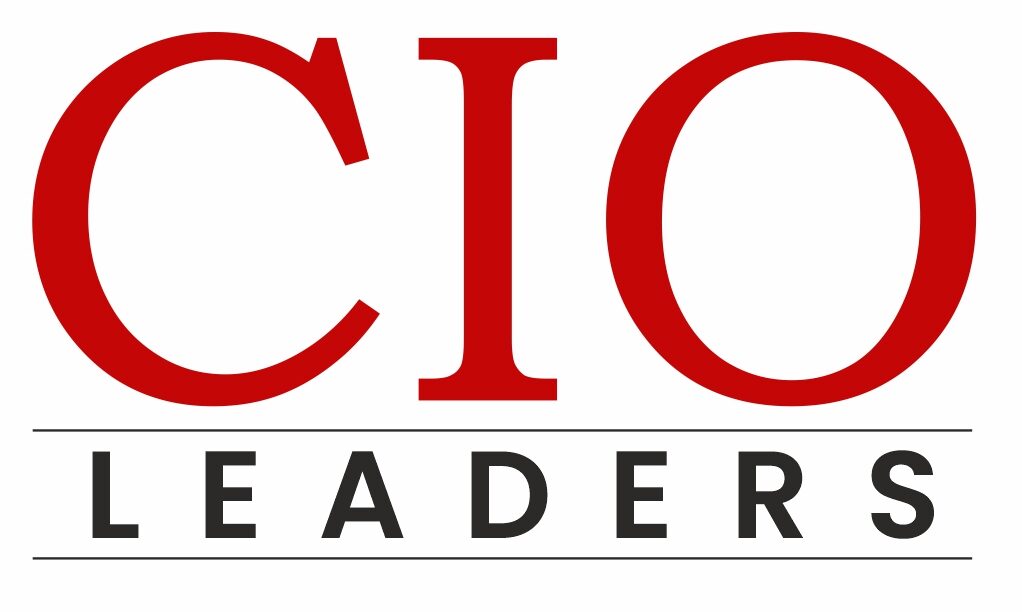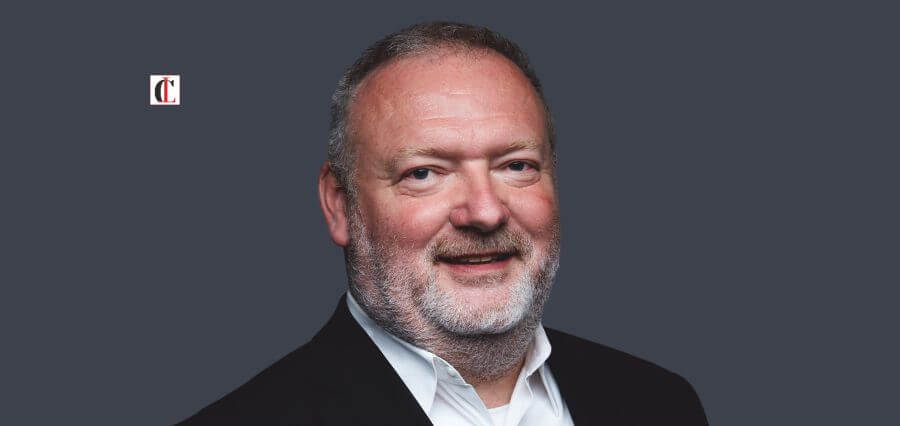Axel Kloth, the Founder and CEO of Abacus Semiconductor Corporation shaping the future of supercomputers in the digital era. With a background as a physicist, Axel recognized over 30 years ago the pivotal role of scalability in processor performance for tackling computational challenges. This revelation led him to spearhead transformative endeavors at Parimics, SSRLabs and Axiado, showcasing the imperative need for innovative solutions in computer architecture.
Now at the helm of Abacus Semiconductor Corporation, Axel continues his trailblazing journey. At Abacus Semi, Axel reiterates his commitment to pushing the boundaries of supercomputers focusing on efficiency, scalability and the seamless integration of accelerators.
Axel’s approach is not just about technological advancement but represents a paradigm shift in how we perceive computational power. Collaborating with Axel and Abacus Semiconductor Corporation means embracing this forward-thinking ethos and actively participating in the evolution of supercomputing.
In Axel’s narrative, each endeavor is a testament to the necessity of new thinking in the ever-changing landscape of technology. Abacus Semi becomes the stage for Axel’s vision, where he repeats the approach that proved successful in the past—proposing novel, practical solutions that redefine the capabilities of supercomputers.
Game-Changing Ventures
Being a seasoned physicist and computer scientist, Axel delves into the realm of supercomputing with a mission—to revolutionize accessibility and efficiency. “I need to emulate and simulate phenomena, and a supercomputer is a very useful tool to do that,” he explains, drawing on his extensive experience since 1989.
Throughout his journey, Axel has witnessed the evolution of supercomputers. “Supercomputers have become a bit easier to use, but they are still very expensive,” he notes, highlighting a persistent challenge. Scalability issues persist, with Axel asserting, “A supercomputer consisting of 10,000 servers does not perform 10,000 times as well as a single server in most applications.”
Recognizing the hurdles in integrating accelerators for applications like High-Performance Computer (HPC), Artificial Intelligence (AI) and Machine Learning (ML), Axel founded Abacus Semiconductor Corporation. His vision is clear—Make supercomputers easier to use, more cost-effective and most importantly, more scalable, particularly when considering the integration of accelerators.
Axel’s venture aims to bridge the gap between promise and delivery in the world of supercomputing. With a commitment to user-friendly interfaces, cost-effectiveness and scalability, Abacus Semiconductor Corporation emerges as a game-changer in the ever-evolving landscape of computational power.
From Progress to Commercial Viability
Axel shares the strides made by Abacus Semiconductor Corporation, emphasizing, “We have made tremendous progress in the development of the technology.” Notably, the company has fortified its position through patent filings ensuring the safeguarding its intellectual property.
Axel affirms, “After rounds of discussions with potential customers and end-users, we know that we are on the right path with our technology and know that it can be commercialized.” The confidence in Abacus Semiconductor Corporation’s technological trajectory underscores its potential impact on the commercial landscape.
Navigating Monumental Challenges
Axel unveils Abacus Semiconductor Corporation’s ground-breaking leap beyond traditional computer architectures, stating, “We have developed technology that is patent-pending that moves the industry past the von-Neumann computer architecture and surpasses the Harvard architecture.” Recognizing the escalating size of computational challenges, Axel emphasizes the inadequacy of a singular processor or server, noting that these challenges are so big that they need 10,000 servers or more.
The pivotal shift lies in Abacus’s focus on connectivity rather than enhancing individual cores. Axel stresses, “The focus of the development must be on how to connect all of them and not on how to make a single core better.” Noteworthy achievements include the integration of special-purpose accelerators and smart memories that are essential components in addressing colossal computational tasks.
In a strategic move to safeguard their innovations, Axel affirms, “We have accomplished all of the above and filed for the protection of our IP through patents with the USPTO.” Abacus Semiconductor Corporation is therefore reshaping the landscape of computational technology to meet the demands of monumental challenges.
Supercomputing 2.0
Axel addresses the shifting paradigm in supercomputing, noting, “Current supercomputers do not solve the computational challenges that researchers are looking for in an efficient and effective manner anymore.” The conventional setup, interconnected via Ethernet and industry-standard switches, falls short of meeting the evolving demands of applications like AI, ML, computational biology, and genetic research.
Recognizing the need for change, Axel and his team at Abacus Semiconductor Corporation have developed transformative technology. Axel explains, “We have developed the underlying technology to improve inter-processor communication across processor cores, accelerator cores, memories, and peripherals.” This innovation caters to the distinct requirements of modern applications.
In the midst of productization, Axel emphasizes the collaborative nature of their approach, stating, “We are in the middle of productizing them, with a lot of feedback from our customers and their customers as end users.” The ongoing implementation phase reflects a commitment to responsiveness and adaptation. Axel highlights the significance of their advancements, stating, “All of the novel technologies we have developed are patent pending at this point in time.”
The Shifting Tides in Mass Storage
Axel unravels the pivotal role of Flash memory in reshaping computing devices. He articulates that flash memory has been an important and integral part of performance improvements throughout the entire ecosystem of computing devices. The impact is particularly evident in smartphones where Flash memory enables seamless storage of diverse content without the need for bulky hard disks.
In the evolution of smart devices, Axel emphasizes, “Simply speaking, the storage capacity of smartphones would not be possible without Flash memory.” Beyond capacity, Flash memory’s performance enhancements contribute to efficient battery usage, mitigating the need for excessively large main memory—Dynamic Random Access Memory (DRAM). Axel underscores its enabling role, stating, “Flash memory has been an enabler for the smartphones we have today.”
Shifting the focus to the Internet backend, Axel notes Flash memory’s displacement of hard disks as the primary mass storage level, resulting in significant server performance gains. While energy savings are notable, Axel envisions a continued trend of improvement. He anticipates Flash becoming faster and denser using up less electric energy with hybrid approaches enhancing its longevity.
Axel anticipates a broader horizon for memory technologies, stating, “I foresee that other novel memory technologies aside from DRAM and Flash will be added to the mix.” These innovations will bridge gaps in performance, power and cost between existing technologies. While Axel believes Flash won’t entirely replace hard disks, he predicts a pivotal shift, asserting, “Flash will take the place of hard disks in primary mass storage, relegating hard disks to warm or cold storage.” Axel’s insights illuminate the trajectory of memory technology, showcasing its indispensable role in the present and future of computing.
Cryptographic Layers
Axel delves into the intricate world of cybersecurity, unravelling the vulnerabilities inherent in every computing device. “Any computing device in existence has vulnerabilities that make it susceptible to cyberattacks,” Axel asserts, pinpointing weak links in architecture, hardware, firmware, operating systems, and application software.
In navigating this complex landscape, Axel emphasizes a strategic approach, steering clear of unnecessary complexity and non-deterministic behaviours. “We refrain from complexity and from non-deterministic behaviours as we believe that deterministic performance is ultimately better and more easily verified,” Axel explains. While speculative code execution has its merits, Axel acknowledges the security risks it introduces.
The cornerstone of Axel’s security philosophy lies in the implementation of Physically Unclonable Functions (PUF) for processors, accelerators and smart memories. “Our processors and accelerators and smart memories all contain those identifiers to guarantee authenticity,” Axel reveals. These unchangeable identifiers, engineered to be inaccessible and unalterable form a robust defense against unauthorized access or modification.
The incorporation of cryptographic functions adds another layer of security enabling secure communication within the system. Axel underscores the importance of restricting system access ensuring that only authenticated administrators and users can interact with the hardware. “We make sure that the hardware supports strong measures to allow only authenticated system administrators to administer the system and only authenticated users to use the system,” Axel states.
Addressing emerging threats like RowHammer and malware, Axel emphasizes proactive measures to protect against data theft, especially primary keys. “We have made sure that the hardware protects the system against these kinds of attempts to steal data,” Axel asserts, showcasing a forward-looking stance against evolving cybersecurity challenges.
Security in Focus
Axel’s insights extend to the intricacies of system traffic management in large-scale environments like supercomputers. Separating administrative and user traffic for security reasons is a fundamental practice. Axel explains, “Administrative traffic usually is separated from the net user traffic for security reasons, via means that are available today, such as the use of closed VLANs.” This segmentation allows for focused monitoring and enhanced security measures.
Monitoring administrative traffic is a crucial component of Axel’s cybersecurity strategy. “Our hardware and firmware work together to monitor all administrative traffic to the system and alert the administrator if something is observed that is considered out of the norm,” Axel affirms. Complementing this, built-in firewall functions address net user traffic, providing a comprehensive security framework.
Axel’s holistic approach to cybersecurity, encompassing hardware, firmware and traffic management, reflects a commitment to fortifying computing devices against an ever-evolving landscape of cyber threats.
Eco-Conscious Leadership
Axel is a visionary in sustainable practices and he emphasizes, “We monitor our energy use, have photovoltaic solar cells installed to partially offset our electricity use.” This conscientious approach aligns with a commitment to eco-friendly operations. Axel underscores a strategic decision, stating, “Most importantly, will have our office along public transportation lines so that our team does not need to commute with personal cars.” This not only reduces the carbon footprint but also promotes a sustainable work environment.
In product design, Axel prioritizes efficiency, stating, “We design and engineer products that enable us and others to make more efficient use of all resources and we make them cost-effective and affordable.” The focus on resource efficiency and affordability reflects Axel’s dedication to fostering sustainability across both internal practices and product offerings.
Quantum Leap
Axel is a luminary in the realm of semiconductors and he accentuates the evolving landscape of computational technology. He acknowledges that semiconductors have been the driving force of innovation for a long time. With the surge in demand for Artificial Intelligence and Machine Learning, he points out the integration of inference engines in CPUs inturn amplifying the efficiency of AI and ML processing on the client side.
The resurgence of analogue computing in certain devices is noted by Axel, who also envisions the imminent role of quantum computing as a large and integral part of general-purpose computing in 25 years or so. However, Axel brings attention to the escalating costs in semiconductor manufacturing with each technological leap. Despite these challenges, he highlights the expanding diversity in processing devices, followed by predicting a continuous surge in computational demand.
Axel emphasizes the critical role of computational efficiency, stating, “We believe that computational efficiency is a key metric that will keep getting more and more important.” In a future dominated by AI-enhanced smartphones and Internet backend servers, the paramount measure remains “how many instructions can be executed in a set time frame at a set and constant level of consumption of electric energy.” His insights reflect a strategic focus on balancing computational power with energy sustainability in the ever-shifting landscape of semiconductors.
Call for Collaboration
Axel declares, “We will continue our efforts to make supercomputers more efficient, more scalable, more inclusive to accelerators for special-purpose applications, and more cost-effective with greater ease of use through more advanced I/O frontends.” This resolute commitment underscores a vision for enhanced computational capabilities.
In an inclusive approach, Axel invites collaboration, stating, “While we develop our technology, we will allow others to join our ecosystem to extend the reach and range of what supercomputers can do, including quantum computing.” This collaborative ecosystem not only expands possibilities but also positions supercomputers at the forefront of technological advancements making strides in efficiency, scalability and inclusivity.

